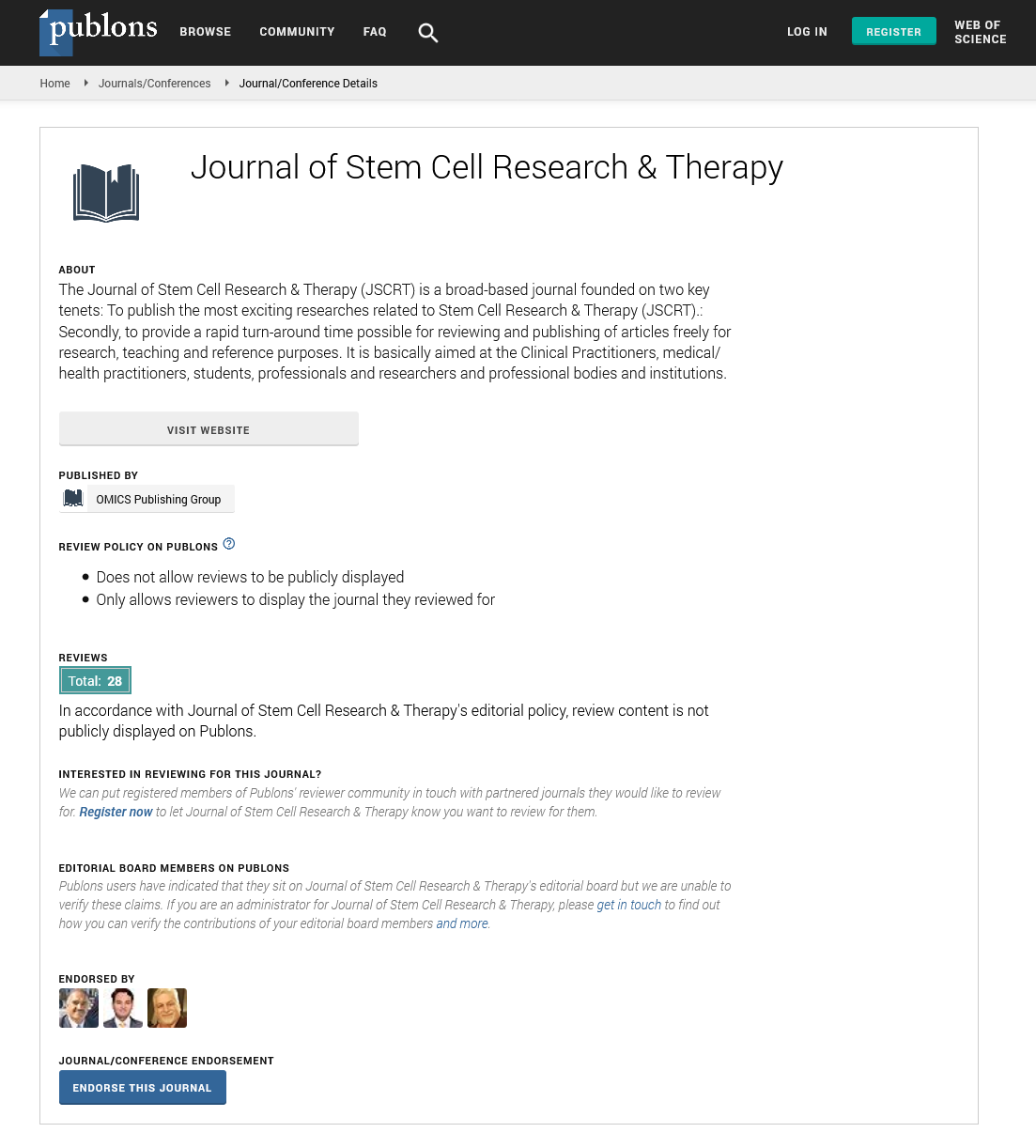Indexed In
- Open J Gate
- Genamics JournalSeek
- Academic Keys
- JournalTOCs
- China National Knowledge Infrastructure (CNKI)
- Ulrich's Periodicals Directory
- RefSeek
- Hamdard University
- EBSCO A-Z
- Directory of Abstract Indexing for Journals
- OCLC- WorldCat
- Publons
- Geneva Foundation for Medical Education and Research
- Euro Pub
- Google Scholar
Useful Links
Share This Page
Journal Flyer

Open Access Journals
- Agri and Aquaculture
- Biochemistry
- Bioinformatics & Systems Biology
- Business & Management
- Chemistry
- Clinical Sciences
- Engineering
- Food & Nutrition
- General Science
- Genetics & Molecular Biology
- Immunology & Microbiology
- Medical Sciences
- Neuroscience & Psychology
- Nursing & Health Care
- Pharmaceutical Sciences
Clinically translatable human sstr2-based reporters for imaging gene expression
5th International Conference and Exhibition on Cell and Gene Therapy
May 19-21, 2016 San Antonio, USA
Vikas Kundra
MD Anderson Cancer Center, USA
Keynote: J Stem Cell Res Ther
Abstract:
Clinical trials of gene therapy have been hampered by a lack of clinically relevant methods for in vivo detection of gene transfer. Evaluating success of gene transfer in the clinic is currently confinedprimarily to biopsy sampling, which provides limited evaluation of in vivo gene delivery, is prone to sampling error, has associated morbidity and mortality, and can have problems with patient compliance especially when repeated evaluation or monitoring of multiple sites is needed. Instead, monitoring of exogenous gene expression should be noninvasive and easily repeatable over time in the same patienttoinform regarding the location, magnitude, and kinetics of gene expression. Moreover, this could prove instrumental towards the rational development of innovative formulations designed to selectively target particular tissues, organs, or disease sites. Reporter genes may be used to approach these needs.. These often encode enzymes, transport proteins, and receptors that most frequently bind and/or entrap an imaging agent. These may be limited for percutaneous imaging of humans because of scatter, such as light based agents; size; immunogenicity, particularly if not of human origin; quantification; and availability of clinically approved imaging agents. A desirable feature of such areporter would be that it does not affect the intracellular milieu by signaling or pump action so that it does not cause untoward effects in expressing cells. We find that human somatostatin receptor type 2 gene-based reporters (SSTR2-based) reporters have such desirable features for imaging in animals and for translation to humans. The SSTR2-based systems enable in vitro, in vivo, and ex vivo assessment of the reporter, can be imaged using clinically approved radiopharmaceuticals, and can be designed to be signaling deficient. Using small animal cognates of clinical machines as well as machines designed for patients, we have used a combination of functional and anatomic imaging to quantify in vivo expression of SSTR2-based reporters and have used these to evaluate methods for improving expression. Imaging and quantification of such reporters has been performed in small animals and, as a bridge to translation, in large animals.
Biography :
Vikas Kundra is a professor of radiology, director of molecular imaging and has a joint appointment in the department of Cancer Systems Imaging at U.T.-MD Anderson Cancer Center. He trained at Harvard Medical School and Brigham and Women’s Hospital. He has multiple publications in basic, translation, and clinical research and is grant funded. He is a fellow society of Body Computed Tomography and Magnetic Resonance (SCBT-MR). He specializes in body imaging, focused on cancer imaging.
Email: VKundra@mdanderson.org

